Pulpotomy
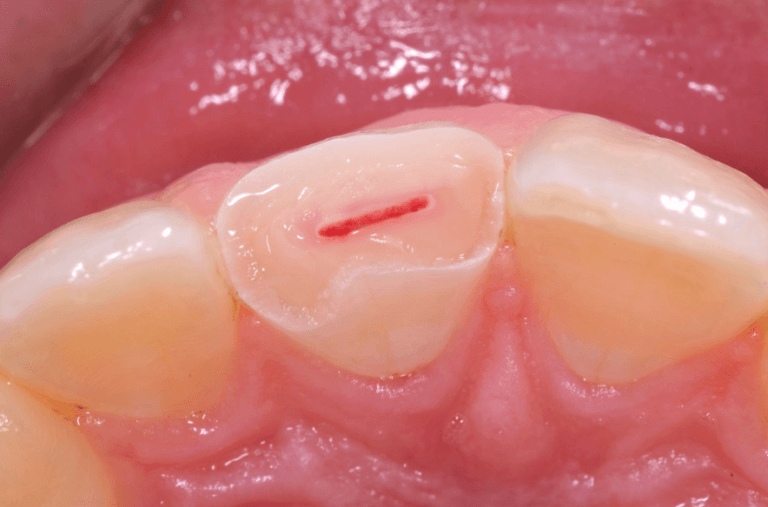
What Is Pulpotomy?
The pulp tissue, located at the center of the tooth, houses nerves and blood vessels, contributing to the tooth’s overall vitality. When this pulp tissue becomes infected with bacteria or is damaged, a procedure like Pulpotomy is necessary. In essence, a Pulpotomy is a less invasive procedure where the pulp that resides in the crown of the tooth is taken out and replaced with a temporary sedative material that can be reabsorbed by the body, but the healthy pulp tissue in the roots are left alone. A Pulpotomy can be done alone on a temporary, emergency basis to alleviate pain and halt the spread of infection. It is often done as the first step in the Root Canal Treatment procedure.
Before deciding on whether Pulpotomy are right for you, there are some things you should know:
- Who Needs Pulpotomy?
- What Are The Indications For Pulpotomy?
- What Are The Contraindications For Pulpotomy?
- What Are The Advantages Of Pulpotomy?
- What Are The Alternative Treatments If I Do Not Choose Pulpotomy?
- How Much Does Pulpotomy Cost?
- What Are The Steps In The Pulpotomy Procedure?
- Can I Have Pulpotomy If I Am Pregnant?
- What Are Common Problems with Pulpotomy?
If you have any further questions about Pulpotomy or other dental services offered at Atlas Dental, please contact us.
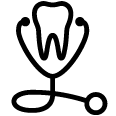
Free phone consultation
Have questions about Pulpotomy? Schedule a free phone consultation with our Toronto dentist.

5 star google reviews
Our patients love us! See for yourself why more and more people are choosing Atlas Dental for Dental Pulpotomy.

Book Emergency Pulpotomy
Do you think you have cavities and need a Pulpotomy? Book an emergency Pulpotomy online.
Who Needs Pulpotomy?
Understanding the circumstances that might lead to a pulpotomy is crucial for recognizing when this dental procedure becomes a necessary course of action. While each individual’s oral health is unique, there are common scenarios where a pulpotomy may be recommended by dental professionals.
- Decayed Teeth: One of the primary reasons for a pulpotomy is extensive tooth decay. When a cavity reaches deep into the tooth, it can penetrate the pulp, leading to infection or inflammation. In such cases, a pulpotomy is often suggested to remove the affected pulp tissue and prevent the spread of infection.
- Trauma or Injury: Teeth are resilient, but they can still be susceptible to damage from accidents or injuries. A severe blow to the mouth can result in pulp damage, necessitating a pulpotomy to address the compromised pulp and maintain the tooth’s overall health.
- Infection or Inflammation: Infections in the pulp can occur due to various reasons, including untreated cavities, cracked teeth, or other dental issues. If left unchecked, these infections can lead to severe discomfort and compromise the vitality of the tooth. A pulpotomy aims to remove the infected or inflamed pulp, preserving the tooth structure.
- Deep Cavities in Baby Teeth: Pulpotomy is not exclusive to permanent teeth; it is also a common procedure for baby teeth. Deep cavities in primary teeth can necessitate a pulpotomy to address the affected pulp and maintain the integrity of the tooth until it naturally falls out.
- Sensitivity and Pain: Persistent tooth sensitivity or pain can be indicative of pulp-related problems. Dental professionals may recommend a pulpotomy to address the underlying issues causing discomfort and improve the patient’s oral health.
It’s important to note that the need for a pulpotomy varies from person to person, and the decision to undergo the procedure is typically based on a thorough examination by a dentist. Regular dental check-ups play a crucial role in identifying potential issues early on, allowing for timely intervention and, in some cases, the prevention of more extensive treatments. If you have further questions about Pulpotomy, please contact us.

What Are The Indications For Pulpotomy?
A pulpotomy is not a one-size-fits-all solution; instead, it is recommended based on specific indications that suggest the need for this dental procedure. Here are some key indications that may prompt a dentist to recommend a pulpotomy:
- Deep Cavities: The presence of deep cavities, especially those that extend into the pulp chamber, is a common indication for a pulpotomy. Deep cavities can expose the pulp to bacteria, leading to infection and inflammation.
- Pulp Exposure Due to Trauma: Teeth that have suffered trauma, such as fractures or breaks, may result in direct exposure of the pulp. This exposure can lead to pulpitis (inflammation of the pulp), making a pulpotomy necessary to address the compromised pulp tissue.
- Persistent Toothache: Lingering toothaches that are not alleviated by over-the-counter pain relievers can be a sign of underlying pulp issues. If the pain is associated with pulp inflammation or infection, a pulpotomy may be recommended to address the root cause.
- Primary Teeth with Reversible Pulpitis: Pulpotomies are commonly performed on primary (baby) teeth when reversible pulpitis is diagnosed. This helps in preserving the primary teeth until they naturally fall out, preventing premature tooth loss and maintaining proper spacing for
Understanding these indications can empower individuals to recognize potential issues and seek timely dental care. Regular dental check-ups are instrumental in identifying these indications early on, allowing for prompt intervention and appropriate treatment. If you have further questions about Pulpotomy, please contact us.
What Are The Contraindications For Pulpotomy?
While a pulpotomy is a valuable dental procedure in many cases, there are situations where it may not be the recommended course of action. These contraindications are factors that may make a pulpotomy unsuitable or less effective. It’s essential to be aware of these contraindications to ensure that the chosen treatment aligns with the individual’s specific dental needs. Here are some common contraindications for pulpotomy:
- Extensive Pulp Necrosis: If the pulp tissue has already undergone extensive necrosis (cell death), a pulpotomy may not be effective. In such cases, alternative treatments, such as root canal therapy, may be considered to address the damaged or infected pulp.
- Advanced Gum Disease (Periodontitis): Pulpotomies primarily focus on issues within the pulp chamber of the tooth. If a patient is experiencing advanced gum disease that has progressed to the supporting structures of the tooth, a pulpotomy alone may not be sufficient. Addressing the periodontal condition may take precedence.
- Irreversible Pulpitis: Irreversible pulpitis refers to inflammation of the pulp that cannot be resolved, typically due to advanced decay or trauma. In cases of irreversible pulpitis, a pulpotomy may not be sufficient, and more extensive treatments like root canal therapy may be necessary.
- Extensive Tooth Decay Beyond Repair: In cases where tooth decay has progressed extensively, compromising the overall structure of the tooth, a pulpotomy may not be effective. Extraction of the tooth and consideration of restorative options like dental implants or bridges might be more suitable.
- Previously Root Canal Treated Tooth: A tooth that has undergone a previous root canal treatment is not eligible for pulpotomy. The complexities arising from residual materials, compromised tooth structure, or potential reinfection can make the procedure less effective or riskier. In such cases, root canal retreatment may be the preferred treatment option.
- Root Resorption: Root resorption is a pathological process where the body breaks down the root structure of a tooth from the inside (internal root resorption) or from the outside (external root resorption). If significant root resorption is present, attempting a pulpotomy may be impractical, as the tooth’s structural integrity may be compromised and can hinder the successful removal of infected pulp tissue. Tooth removal and replacement options such as dental implants may be the preferred treatment option.
Understanding these contraindications underscores the importance of personalized dental care. Dentists carefully evaluate each patient’s unique circumstances to determine the most effective and appropriate treatment plan. If you have further questions about Pulpotomy, please contact us.
What Are The Advantages Of Pulpotomy?
A pulpotomy offers several advantages, making it a valuable dental procedure in certain situations. Understanding these benefits can help individuals appreciate the significance of a pulpotomy when recommended by their dentist. Here are some key advantages of undergoing a pulpotomy:
- Preservation of Tooth Structure: One of the primary advantages of a pulpotomy is its focus on preserving the natural tooth structure. By selectively removing the affected pulp tissue while leaving the healthy pulp intact, the procedure helps maintain the structural integrity of the tooth.
- Pain Relief: Pulpitis, or inflammation of the pulp, can be accompanied by severe toothache. A pulpotomy aims to alleviate pain by removing the source of inflammation, providing relief to individuals experiencing discomfort.
- Infection Control: Pulpotomies are effective in addressing infections within the pulp chamber. By removing the infected tissue and applying medicaments, the procedure helps control and eliminate bacterial growth, preventing the spread of infection to surrounding tissues.
- Suitable for Primary Teeth: Pulpotomies are commonly performed on primary (baby) teeth, allowing for the preservation of these teeth until they naturally fall out. This is crucial for maintaining proper spacing and facilitating the eruption of permanent teeth.
It’s important to note that while a pulpotomy offers these advantages, its suitability depends on the specific circumstances of each case. Dentists carefully assess the individual’s dental health, considering factors such as the extent of pulp involvement, overall tooth condition, and the patient’s medical history before recommending a pulpotomy. If you have further questions about Pulpotomy, please contact us.
What Are The Alternative Treatments If I Do Not Choose Pulpotomy?
While a pulpotomy is a common and effective treatment for certain dental conditions, there are alternative approaches that may be considered based on the specific circumstances of the individual’s oral health. Here are some alternative treatments to pulpotomy:
- Root Canal Therapy: For cases where the pulpitis is more advanced, irreversible, or involves multiple canals, root canal therapy may be recommended. This procedure involves the complete removal of the pulp, followed by cleaning, shaping, and permanently sealing the root canals to preserve the tooth.
- Root Canal Retreatment: If a previous root canal treatment has not been successful or if complications arise, a retreatment of the root canal may be suggested. This involves reopening the tooth, removing existing filling material, and addressing any remaining issues in the pulp chamber.
- Direct Pulp Capping: Direct pulp capping is a conservative alternative in cases where the pulp is minimally affected. This procedure involves applying a medicament directly to the exposed or nearly exposed pulp to stimulate healing and prevent further damage.
- Indirect Pulp Capping: This is a procedure when the pulp is not directly exposed but is at risk due to deep dental decay. The dentist removes the decayed tissue, leaving a thin layer of affected dentin above the dental pulp. A medicated material is placed over the remaining dentin to stimulate healing and protect the pulp. A restoration, like a filling or crown, is then applied to seal the tooth.
- Pulpectomy: A pulpectomy involves the complete removal of the dental pulp from the tooth, including the pulp chamber and root canals. After removal, the space is cleaned, disinfected, and filled with a temporary sedative material. A restoration, like a filling or crown, is then applied to seal the tooth.
- Tooth Extraction: In situations where the tooth is severely damaged, has extensive decay, or if the patient prefers not to undergo pulp-related procedures, extraction may be considered. While extraction removes the problematic tooth, it also requires consideration of tooth replacement options.
The choice among these alternatives depends on various factors, including the extent of pulp involvement, overall tooth condition, patient preferences, and long-term oral health goals. Dentists work closely with patients to discuss these options, considering the individual’s unique circumstances and guiding them toward the most suitable treatment plan. If you have further questions about Pulpotomy, please contact us.
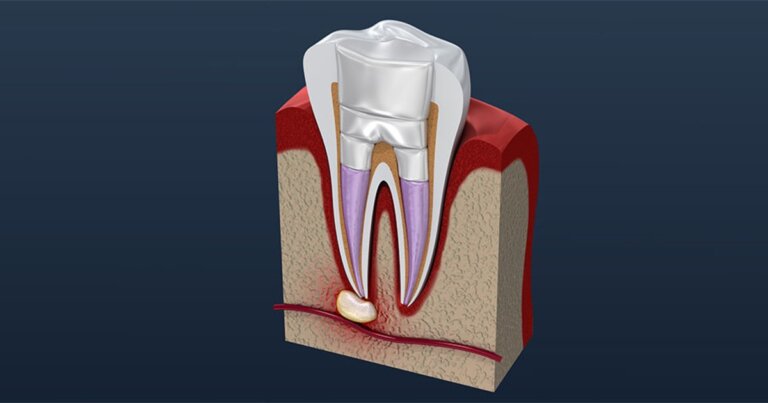
Cost of Pulpotomy
The cost of Pulpotomy treatment depends on whether the tooth is a primary/baby tooth or a permanent/adult tooth, as well as the number of canals inside the tooth. Therefore, the cost of a Pulpotomy can range between $107-259. The codes relevant to pulpotomy in the Ontario Dental Association’s Suggested Fee Guide appear as follows:
Pulpotomy, Permanent Teeth (as a separate emergency procedure)
- 32221 – Anterior and Bicuspid Teeth: $168
- 32222 – Molar Teeth: $259
Pulpotomy, Primary Teeth
- 32231 – Primary Dentition, as a Separate Procedure: $168
- 32232 – Primary Dentition, Concurrent with Restorations (but excluding final restoration): $107
Pulpotomy, Permanent Teeth Concurrent with Restorations (but excluding final restoration)
- 32241 – Anterior and Bicuspid Teeth: $107
- 32242 – Molar Teeth: $107
Pulpotomies are considered a basic service under all dental insurance plans and should be covered to your maximum insurable limit, but be sure to find out from your dental insurance plan provider how much you are eligible for before going ahead with dental treatment. Our fees are consistent with the ODA Fee Guide.
For patients without dental insurance, Atlas Dental is pleased to offer dental financing through Dentalcard. Affordable payment plans start at 7.95% for terms of 6 months to 6 years. To learn more about Dentalcard dental treatment financing, follow this link.
What Are The Steps In The Pulpotomy Procedure?
A pulpotomy is a carefully orchestrated dental procedure designed to address issues within the pulp chamber while preserving the overall integrity of the tooth. The process involves several distinct steps, each serving a specific purpose in achieving a successful outcome. Here is an overview of the typical steps involved in a pulpotomy procedure:
- Preparation and Anesthesia: To ensure the patient’s comfort during the procedure, local anesthesia is administered to numb the affected tooth and the surrounding area. This helps minimize any potential pain or discomfort.
- Isolation of the Tooth: The dentist isolates the tooth from the rest of the oral environment using a rubber dam. This isolation prevents contamination of the tooth and surrounding tissues during the procedure.
- Access Opening: Using dental instruments, the dentist creates an access opening in the crown of the tooth. This opening allows access to the pulp chamber, where the affected pulp tissue is located.
- Removal of Damaged Pulp: The next step involves carefully removing the damaged or infected pulp tissue from the pulp chamber. The goal is to eliminate the source of infection or inflammation while leaving the healthy pulp tissue intact.
- Application of Medicaments: After the removal of the damaged pulp, a medicament such as calcium hydroxide, ferric sulfate or formocresol is applied to the remaining healthy pulp to promote healing and prevent further infection. These medicaments had antibacterial and tissue preserving properties.
- Placement of a Pulpotomy Filling: Once the medicaments are applied, the dentist places a suitable filling material in the pulp chamber to seal and protect the tooth. This filling material helps maintain the tooth’s structural integrity.
- Restoration of the Tooth: In many cases, a restoration is placed on the tooth to provide additional support and protection. This may involve the placement of a dental crown, especially if the tooth has experienced significant decay or damage.
- Follow-Up Appointments: Depending on the case, the dentist schedules follow-up appointments to monitor the healing process and assess the long-term success of the pulpotomy. Regular dental check-ups are essential for maintaining optimal oral health.
It’s important to note that the specific steps of a pulpotomy can vary based on factors such as the tooth involved, the extent of pulp involvement, and the dentist’s preferred techniques. Patients are encouraged to communicate openly with their dentist, addressing any concerns or questions they may have about the procedure and postoperative care. If you have further questions about Pulpotomy, please contact us.
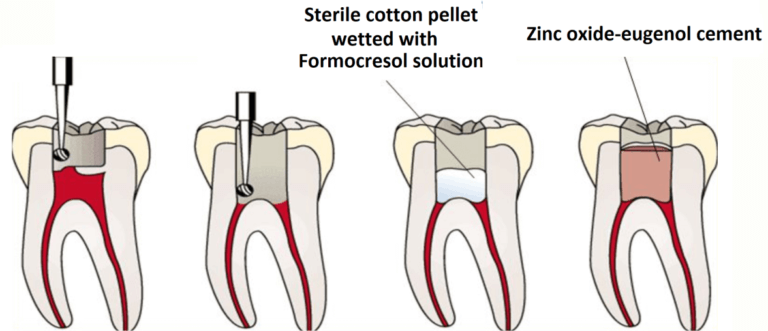
Can I Have Pulpotomy If I Am Pregnant?
The question of whether a pregnant individual can undergo a pulpotomy involves careful consideration of both dental and maternal health. Dental care during pregnancy is essential, as hormonal changes can increase the risk of oral health issues. Here’s a comprehensive overview to address concerns about receiving a pulpotomy during pregnancy:
- Consultation with Healthcare Providers: The first and foremost step is to consult with both the dentist and obstetrician. Open communication between healthcare providers is crucial to ensure that any proposed dental procedures, including a pulpotomy, align with the overall health and safety of both the patient and the developing fetus.
- Local Anesthesia Considerations: Local anesthesia, commonly used during dental procedures, is generally considered safe during pregnancy. The amount of anesthesia administered is typically minimal, and the benefits of addressing dental issues often outweigh potential risks. The dentist will choose anesthetic agents that have a well-established safety profile during pregnancy.
- Radiation Exposure: Dental X-rays may be part of the diagnostic process before a pulpotomy. While dental X-rays expose patients to low levels of radiation, the risk to the developing fetus is minimal, especially if appropriate shielding measures are in place. X-rays are typically avoided during the first trimester unless absolutely necessary.
- Timing of the Procedure: If a pulpotomy is deemed necessary, healthcare providers often recommend performing elective dental procedures during the second trimester. This period is generally considered the safest time for dental treatments, as the risk of complications is lower.
- Minimizing Stress and Anxiety: Pregnancy can be a sensitive time, and stress or anxiety may impact both maternal and fetal well-being. Dentists may take extra measures, such as providing a calm environment and explaining the procedure thoroughly, to help minimize stress during the pulpotomy.
- Postoperative Care: Following the pulpotomy, postoperative care instructions should be carefully followed. Any prescribed medications or recommendations for pain management should be discussed with both the dentist and obstetrician to ensure they are safe during pregnancy.
It’s essential to emphasize that every pregnancy is unique, and decisions regarding dental procedures should be made on an individual basis. Open communication between the patient, dentist, and obstetrician is key to ensuring that the chosen dental treatment aligns with the overall health and well-being of both the expectant individual and the developing fetus. If there are concerns or questions, seeking advice from healthcare professionals is crucial for making informed decisions about dental care during pregnancy. If you have further questions about Pulpotomy, please contact us.
What Are Common Problems With Pulpotomy?
While pulpotomy is generally a successful dental procedure, certain issues or complications may arise in some cases. It’s crucial for individuals to be aware of potential problems associated with pulpotomy, allowing for prompt identification and intervention. Here are some common problems that can occur:
- Persistent Pain: While some discomfort is normal after a pulpotomy persistent or increasing pain may indicate a problem. This could be due to incomplete removal of infected tissue, a complication in the healing process, or the development of a new issue.
- Swelling or Abscess Formation: Despite the removal of the affected pulp during the pulpotomy, there is a risk of recurrent infection that can lead to swelling or abscess formation. This may happen if bacteria are not entirely eliminated from the pulp chamber or if new infection occurs after the procedure.
- Discoloration of the Treated Tooth: If the tooth that underwent a pulpotomy begins to change color, turning gray or dark yellow, it could indicate problems with the pulp or the blood supply to the tooth. Discoloration may suggest ongoing issues that require further evaluation.
- Root Canal Complications: Complications related to the root canal, such as instrument fracture or perforation, may occur during the pulpotomy procedure. While these are rare, they can impact the success of the treatment and may require additional intervention.
Regular dental check-ups are crucial for monitoring the health of teeth that have undergone a pulpotomy. Dentists can identify and address potential problems early on, increasing the likelihood of successful outcomes. Open communication with the dentist about any concerns or changes in oral health is essential for maintaining the long-term effectiveness of the pulpotomy. If you have further questions about Pulpotomy, please contact us.
We also think you’ll like…

Dental Infection
Dental Infection What Is Dental Infection? Dental Infection, also known as a tooth or gum infection, occurs when harmful bacteria invade the tissues of the

Broken Tooth
Broken Tooth What Is A Broken Tooth? A Broken Tooth refers to a tooth that has been cracked, fractured or chipped. It can be caused
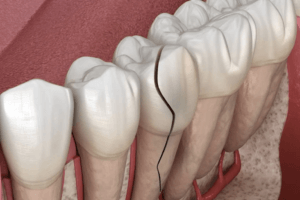
Crack Tooth Syndrome
Crack Tooth Syndrome What Is Crack Tooth Syndrome? Are you experiencing dental pain but your dentist has told you there is no obvious sign of
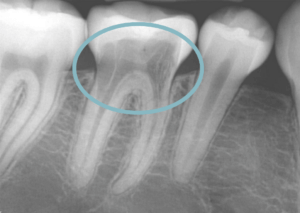
External Root Resorption
External Root Resorption What Is External Root Resorption? External root resorption occurs when the body’s own immune system attacks and breaks down the outer root
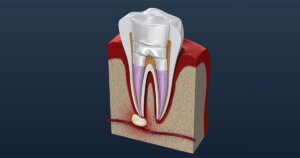
Root Canal Treatment
Root Canal Treatment What Is Root Canal Treatment? If you’ve been told that you need a Root Canal Treatment, you might be feeling a bit
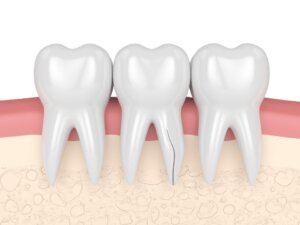
Vertical Root Fracture
Vertical Root Fracture What Is A Vertical Root Fracture? A Vertical Root Fracture is a kind of dental problem that’s quite challenging for dentists to

